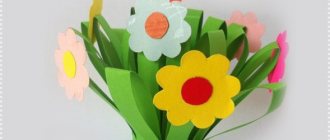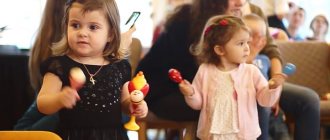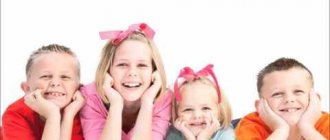“Non-traditional forms of work in physical education with preschool children”
Kozlova T.A. MAOU "Progymnasium No. 119", Saransk
physical education instructor
“Non-traditional forms of work in physical education with preschool children
”
In the last decade
There is a trend towards deterioration in the health of children throughout the world. Environmental problems, various negative household factors, chemical additives in food, poor-quality water, accumulating irritations in society associated with an unsatisfactory economic situation are just some of the factors that aggressively affect the health of a preschooler. The well-being of society largely depends on the health of children.
Physical health
– a fundamental condition for the spiritual and moral development of a person. In preschool age, the foundation of health is laid: the life systems and functions of the body mature and improve, its adaptive capabilities develop, its resistance to external influences increases, posture is formed, physical qualities and habits are acquired, and strong-willed character traits are developed, without which a healthy lifestyle is impossible.
Physical culture covers those aspects of life and education that are crucial for the normal physical development of a person’s motor sphere. Therefore, it is extremely important to properly organize work in this direction precisely in preschool age, which will allow the body to accumulate strength and ensure in the future not only full physical, but also diversified personality development.
Physical education as the main form of work in physical education has taken a strong place in preschool educational institutions, which solves a whole range of health-improving, educational and educational tasks.
At the same time, the development of the problem of development of preschool education based on an alternative organization of the educational process lags behind the needs of society and the educational system as a whole. The relevance of the problem of using alternative physical education activities of a non-traditional orientation, which take into account the characteristics of the motives and needs of preschool children, becomes particularly acute for preschool educational institutions. A preschool institution, as the first link in continuous health-preserving education, involves the choice of alternative forms and methods of organizing the educational process to preserve and strengthen the health of children. The development of children is closely related to health: only a healthy child can develop correctly and fully.
Many teachers are creative in organizing physical education classes, coming up with interesting forms of conducting them, content, methods and techniques, thereby ensuring the formation of a strong, sustainable interest in physical education in children and the need to engage in it. But at the same time, not all preschool educational institutions fully solve these problems: they take a formal approach to conducting physical education classes, and mainly use traditional classes. Therefore, physical education classes are dry, monotonous, and as a result of this, there is a lack of interest, desire to engage in physical education, and poor physical development and health. Hence the need arises to change the forms of conducting physical education classes to non-traditional ones.
"BILBOKE"
Material: the top of plastic bottles, a Kinder Surprise container or ball, colored thread or ribbon.
Goal: Improving the ability to throw an object up or catch it; develop the eye, reaction speed, coordination of movements of the forearm and fingers, dexterity, accuracy, eye, arbitrariness of behavior, reaction speed. Cultivating perseverance, perseverance, a positive spirit of competition, developing self-control skills.
Use case: Children throw the container up and catch it with a bottle. If you caught it, well done! Games “Who is the most dexterous?”, “Hit the target”, games of a competitive nature.
The purpose of these guidelines is to increase children's interest in physical education, create a need for independent action, and also attract the attention of parents to the problem of maintaining children's health.
It's no secret that the health of the child comes first for every parent. The most effective and affordable means of increasing health potential is physical education and, above all, physical activity. In practice, we are convinced of a decrease in children’s interest in physical activity, their inactivity, and reluctance to take part in outdoor games. Which leads to an increase in morbidity.
How can we make the world of movements truly attractive and interesting for children and parents? To solve this problem, in our group “Semitsvetik”, we use non-standard equipment made by parents, children and teachers with their own hands, which allows you to quickly and efficiently develop motor skills and abilities and helps to increase interest in physical education activities, making children’s movements more diverse, develop creativity and imagination.
Classes with non-standard equipment can be both entertaining and training in nature; they can be organized in the form of game, plot, thematic, educational and training sessions. The novelty lies in the unusual shape and colorfulness of non-standard equipment, which attract the attention of children and increase their interest in performing basic movements and exercises and contribute to a high emotional tone during classes.
The manufactured non-standard equipment is small-sized and quite versatile, and is easy to process. It is easily transformed with minimal time and can be used both indoors and outdoors.
Non-standard equipment is an additional incentive to intensify physical education and health activities. Therefore, it is never superfluous and boring. For teachers and parents, I offer several examples of non-standard physical education equipment that you can easily make with your own hands.
"AIR FOOTBALL"
Material: Box covered with self-adhesive film, goal cups, foil for the ball and straws.
Goal: Develop breathing, exhalation power. Cultivating perseverance, perseverance, and a positive spirit of competition.
Use: in gaming activities.
The game is installed on the table. There are 1 player on both sides, armed with straws. The balls are placed in the center of the playing field. The players' task is to score the most goals against the opponent's goal. At the same time, they should not touch the ball with their hands, but can only blow on it through the tubes.
If a player touches the ball with his hand or straw, the opponent receives one extra point. By agreement, the players can introduce some football rules.
Non-traditional physical education equipment (do-it-yourself)
"Magic rug"
This equipment is made of plastic bottles with caps based on drape fabric.
Designed for barefoot walking, correction and prevention of flat feet, hardening. It is used for physical exercises, during wake-up exercises, and joint sports events with parents.
"Footprints and palms"
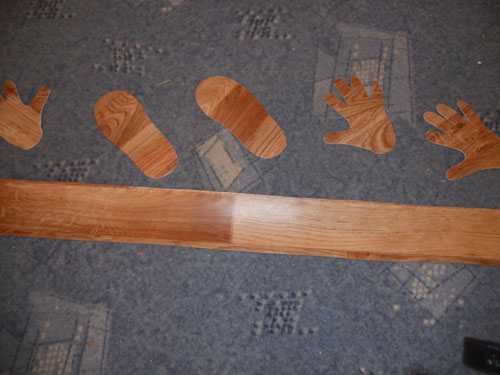
This equipment is made from pieces of linoleum.
Used for outdoor activities and entertainment, to reinforce the concepts: “right leg”, “left leg”, “right hand”, “left hand”. Promotes the development of coordination of movement, memory, dexterity, strengthening the muscles of the legs and arms, attention.
"Breeze in a Bottle"
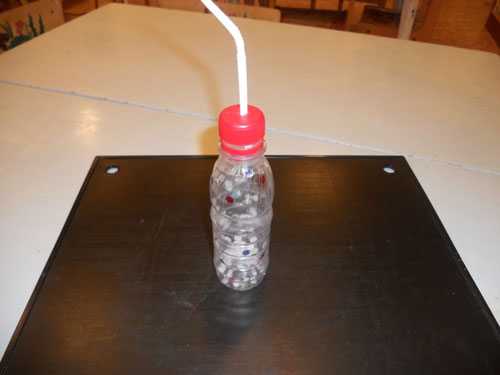
This manual is made from a plastic bottle, colored paper, and cocktail straws.
Used for breathing exercises. Develops respiratory organs.
"Sultans"

Made from sticks and colored ribbons and ribbons.
Designed for performing general developmental exercises, breathing exercises, organizing outdoor games, and competition games. Promotes the development of respiratory organs and trunk muscles.
"Bilboke"
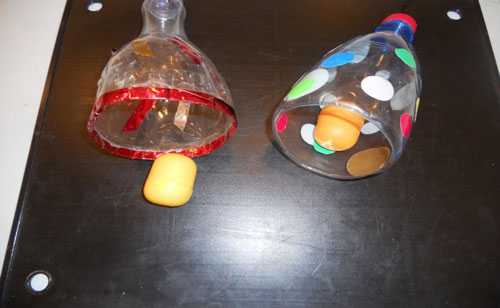
Made from plastic bottles, fishing line, Kinder Surprise capsules, for decoration: colored adhesive paper.
Designed to hit the target. Develops eye, attention, reaction speed, manual dexterity.
"Sports cubes"

Made of plastic cubes, paper with silhouettes of a person performing various exercises.
Intended for use in independent play activities, organized educational activities, and for working at home with parents. Helps strengthen body muscles, develop general developmental exercises, attention, coordination of movements, and speed of reaction.
"Nimble Mouse"
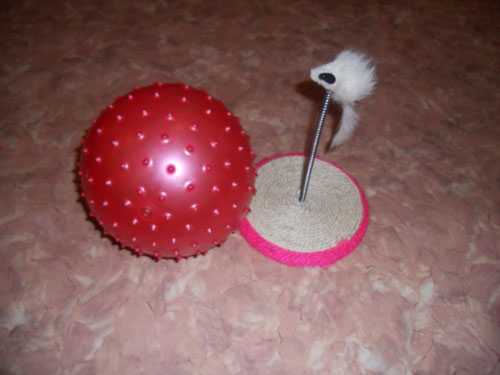
Made from a ball, a mat glued to a wooden base, a spring, and a mouse toy.
Designed to hit the target for playing individually, in pairs, or as a team. Develops eye, attention, reaction speed, manual dexterity.
Expander
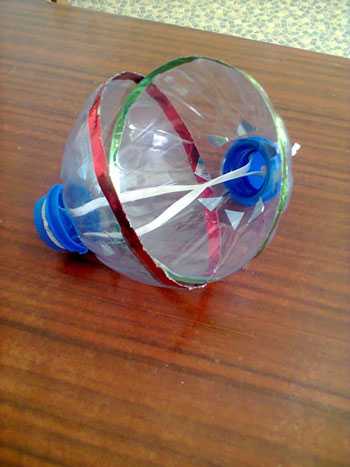
Made from five-liter plastic cans and elastic.
Designed to develop strength.
Dumbbells

Made from plastic bottles, colored tape and sand (or other material for filling them).
Designed to develop strength.
Multi-colored balls
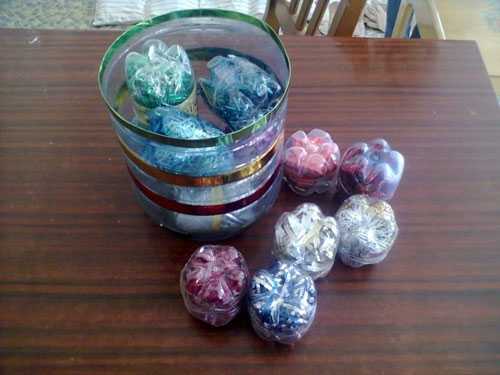
Made from small plastic bottles, filled with colored rain, candy wrappers, etc.
Designed to perform general developmental exercises, basic types of movements, massage and self-massage, prevention of flat feet, development of fine motor skills, used as substitute objects for role-playing games.
Tunnel
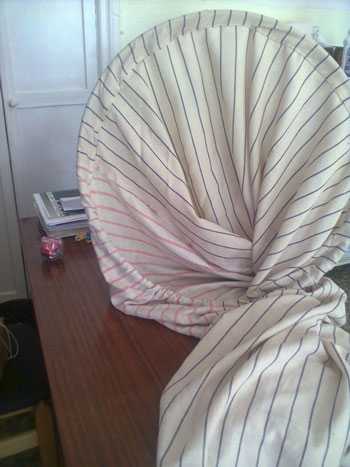
Made from aluminum hoop and thick fabric.
Designed for climbing. Used in outdoor games, when performing basic types of movement, in role-playing games.
Walkers

Made from painted wooden blocks and clothesline.
Designed to perform basic types of movement, to develop movement coordination, and for independent play activities.
Sports bags
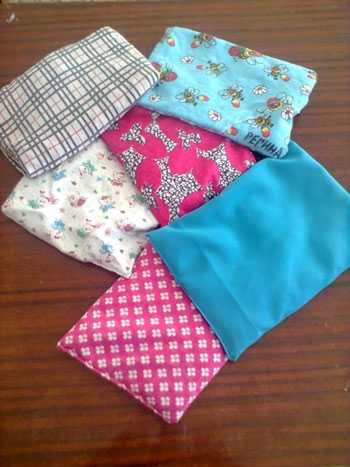
Made of thick fabric and filled with beans, you can use other filler (small pebbles, beads, peas, etc.)
Designed to perform general developmental exercises, basic types of movements, massage and self-massage, and prevention of flat feet.
dohcolonoc.ru
"breeze TO THE BOTTLE"
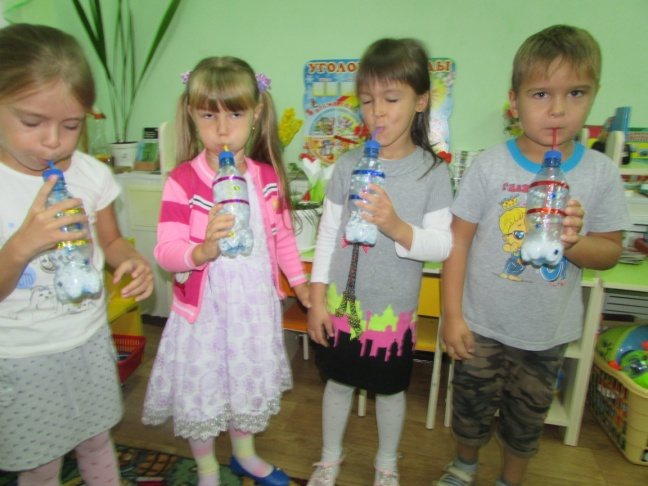
Material: A plastic bottle filled with confetti, foil, pieces of foam, etc., with holes punched in it. Cocktail tube.
Goal: To teach proper breathing (inhale through the nose, exhale through the mouth).
Usage: The child blows into a tube inserted into the lid. Breathing exercises in play activities.
"BAGS"
Material: Thick fabric or leatherette, sand or salt 150 and 200 grams.
Goal: Development of throwing skills from different distances and from different positions, development of arm strength. Fostering a positive competitive spirit.
Use: For outdoor switchgear classes and outdoor games. The game “Who will throw further?”, “Who will collect it faster?”, “Funny catch-up”. Children stand in a circle and pass 2 bags to each other. Purpose of the game: the bags should not meet, catch up with each other. In competitions, as a relay baton.
"WINDERS"
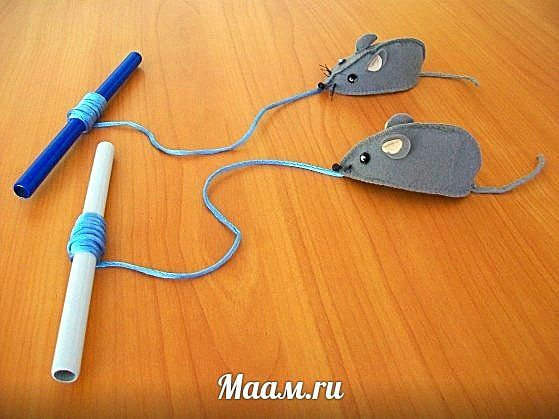
Material: Sticks, cord, Kinder surprise packages, a circle sewn from fabric, ropes.
Goal: To develop fine motor skills, dexterity, and speed of movement. Cultivating perseverance, perseverance, and a positive spirit of competition.
Use: Can be used in free play activities and competitions. Children wrap a cord with an attached kinder around a stick.
Game "Who is faster?"
We make non-traditional physical education equipment with our own hands!
The health of children should always come first. And everyone knows that nothing strengthens it more than physical education. Therefore, love for it must be instilled from a very young age. In order to somehow get children to move more and, most importantly, usefully, they need to be interested. Non-traditional physical education equipment will just help them look at sports from a different perspective and turn exercise into a fun game. This will significantly diversify a child’s life. In addition, you can make non-traditional physical education equipment with your own hands.
What it is
Various exercises are very important for children to help develop fine motor skills. This, above all, has a positive effect on their psyche and reduces the incidence of illness. Non-traditional do-it-yourself physical education equipment, a photo of which you can see in our article, puts the emphasis on such exercises.
The big plus is that with the help of such equipment you can play games of various types:
- training;
- entertaining;
- adversarial.
In principle, if you use your imagination, you can even prepare a special performance with interactive inserts (for example, how to defeat Koshchei using physical education classes).
How to make non-traditional physical education equipment with your own hands in kindergarten and at home
This equipment is very easy to make. Do-it-yourself non-traditional physical education equipment is made from available materials: bottles, caps, ropes, Kinder surprise packaging and other things that can be found in every home.
It doesn't take much time to make. You can also involve children to help. They will be very interested. When creating products, you should try to use your imagination and come up with something of your own. There are no restrictions here. But, of course, you can take advantage of already known developments in this area.
Bilbock

Everyone knows the game where a ball tied to a stick needs to be thrown into a special bowl. This is bilboke. Making such non-traditional physical education equipment with your own hands from available materials is as easy as shelling pears. For this you will need:
- plastic bottle with cap;
- wool thread;
- packaging from Kinder Surprise;
- decorations.
First you need to cut off the bottom of the plastic container. It is advisable to do this so that there are no pointed ends left. Using an awl, a hole is made in the yellow Kinder egg through which the thread is threaded. To prevent it from jumping out, a knot is tied at its end. The second end of the rope is threaded through the neck and screwed together with the lid. In order to make the bilboke more colorful and attractive, it should be covered with bright tape. You can use printed pictures, glitter and beads.
Games with bilboke help develop reaction and coordination of movements.
Pouch

It would seem, how to use it? But it can be found in many applications. For example, bags can be placed on the head so that children maintain their posture at all times. Since problems with spinal curvature are becoming more common, such exercises will be very useful. You can sew a bag from ordinary thick fabric. The filler will be salt or sand.
Magic bottle

A very simple product. To create it you will need a transparent plastic bottle, a cocktail straw, confetti or foil.
You need to make a hole in the lid. A tube will be inserted there. Small confetti, cut foil or large glitter are placed in the bottle itself.
The child should inhale through the nose and exhale through the mouth into a tube. This way he masters the correct breathing technique and watches the cheerful “fireworks” inside the bottle.
Air football
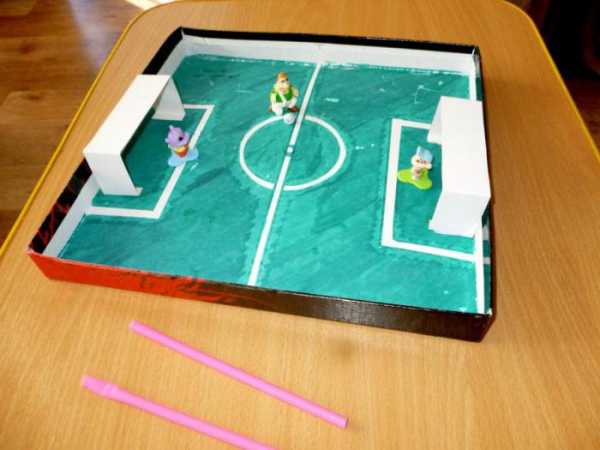
A very interesting and simple game. You don’t need a lot of materials to create such non-traditional physical education equipment with your own hands. All you need is a large box lid (or just cardboard), a plastic cup, colored paper, glue, straws and a small ball.
It is also easy to do. The lid of the box (if it doesn’t exist, you can simply make the sides out of cardboard) is covered with green paper on the inside. This will create something like a field. The gate can be made from halves of a plastic cup. They score goals on such a field using straws. You need to use a stream of air to drive the ball into the makeshift gate.
Tunnel
With it you can create a whole obstacle course. To create a tunnel you need a large piece of fabric and thick wire. First, the fabric is stitched. Then a few more small strips are attached on top across the tunnel. They will hide the wire so children don't get hurt.
Beast racing
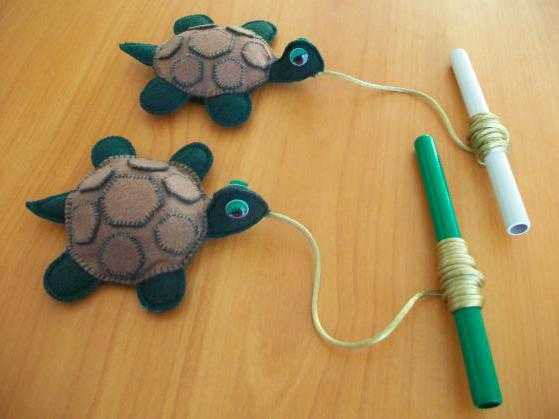
Using regular tape, a beautiful stick and a soft toy, you can make an exciting game that will help develop fine motor skills in your child’s hands. A soft toy is tied at one end, and the other end is tied to a handle. It is important that the ribbons are all the same size. The task is simple: you need to twist the handle, winding the rope around it. This way the toy animal will slowly move towards the baby. You can organize whole competitions.
Robin Hood
With the help of non-traditional physical education equipment, you can organize an entire throwing tournament with your own hands. You don't need a bow and arrow to become a real Robin Hood. Just a tray of eggs, paints and Kinder packaging is enough. We decorate the tray so that it looks like the target. That is, in the center there should be a small square painted red. This will be an apple. Next is a slightly larger yellow circle, and then a green one. Instead of throwing arrows, you will need to throw Kinder packaging. This interesting game helps develop coordination, accuracy and dexterity.
fb.ru
"MASSAGE GLOVES"

Material: Gloves, beads, buttons, threads and needles.
Goal: Increasing the overall tone of the body (help to have a positive effect on the growth and development of the child’s body, relieve fatigue, improve blood circulation, calm the nervous system of preschoolers). Strengthening the immune system and improving the emotional state of the child.
Use: Children massage all parts of the body for themselves and each other.
"FUNNY PENCILS"

Material: the equipment is made of colored pencils or felt-tip pens, the Kinder container is a surprise.
Purpose: to promote the prevention of flat feet, foot massage. Improves blood circulation in fingers, hands and forearms.
Options for use: Palm massage (rotating the barrel of a pencil between the palms), massage of the fingertips, massage of the back and inside of the palm. Foot massage, lifting a pencil with your toes. Use as attributes.
